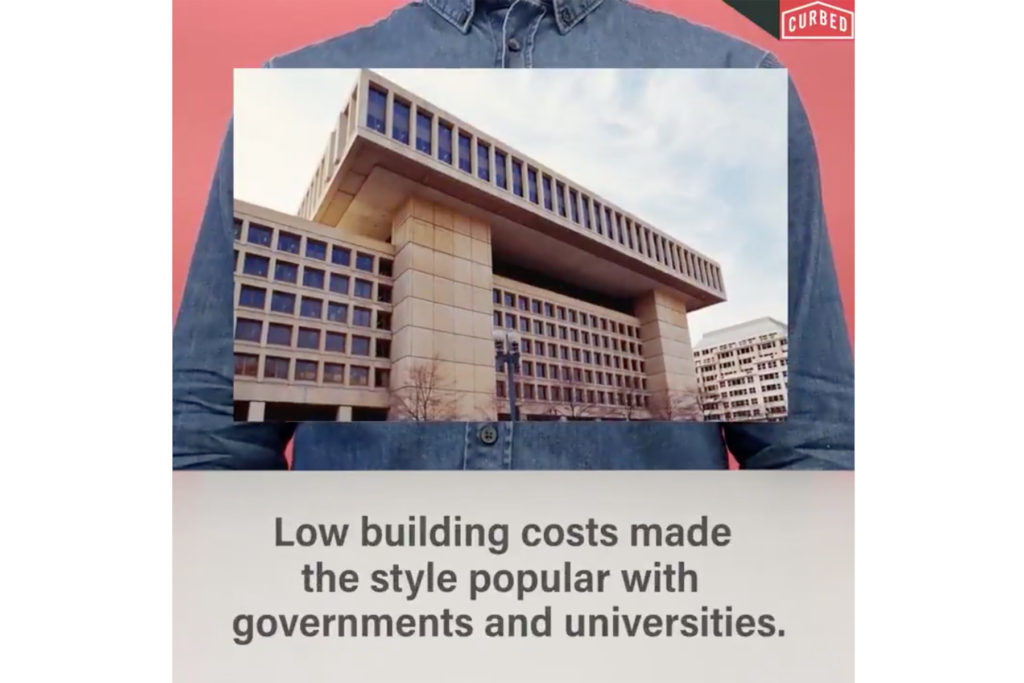
Defining Brutalism can be a challenge. As a style that spans multiple decades and sprang from multiple continents simultaneously, its definition arises primarily out of post-application by architectural critics (we’ve developed our own working definition of Brutalism). Thankfully, the good folks at Curbed have put together a handy video explainer on Brutalism as part of Curbed’s “Hands On” series, linked below for your perusal.
The video lists off a few prominent examples of Brutalism, including Boston City Hall, Moshe Safdie’s Habitat ’67 in Montreal, Louis Kahn’s Dhaka National Assembly in Bangladesh, and Le Corbusier’s Unité d’Habitation complexes (Washington, D.C.’s J. Edgar Hoover FBI Building earns a cameo!).
Do you love or hate Brutalism? Our new explainer series, “Hands On,” breaks it down. pic.twitter.com/7SFAcD36fe
— Curbed (@Curbed) August 2, 2017
Curbed lists the tenets of Brutalism as
- Exposing structural materials such as concrete and steel
- Repeating modular exterior elements to shape interior spaces, and
- Embodying ethics in architecture through affordable high design
Credit Curbed for producing a brief and digestible explainer on the style: At just over three minutes, it’s long enough to include multiple perspectives about Brutalism, e.g., that it has become a stand-in architectural style for dystopian futures, and that it’s celebrated for its honesty of materiality; and short enough that it’s easy to share with Brutalism neophytes.
Read Brutalist DC’s definition of Brutalism.
